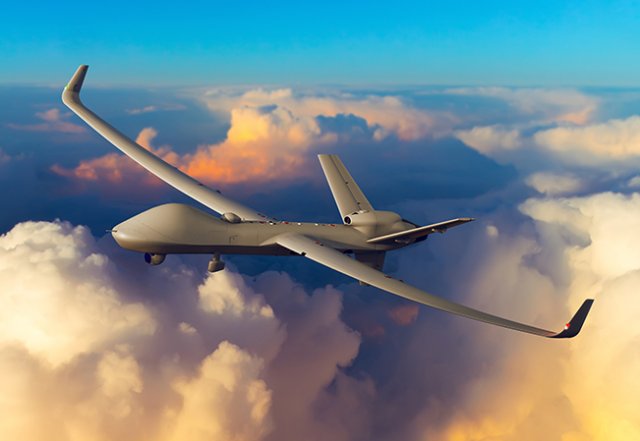Breaking news
GA-ASI's Certifiable Predator B achieves fuselage structural integrity testing phase.
| a | |||
|
|
|||
|
World Aviation Defense & Security Industry News - GA-ASI
|
|||
|
|
|||
|
GA-ASI's Certifiable Predator B achieves fuselage structural integrity testing phase
|
|||
|
General Atomics Aeronautical Systems, Inc. (GA-ASI), a leading manufacturer of Remotely Piloted Aircraft (RPA) systems, radars, and electro-optic and related mission systems solutions, announced on May 4 that it has successfully completed fuselage structural integrity testing of its Certifiable Predator B (CPB) RPA.
|
|||
|
|
|||
 GA-ASI's Certifiable Predator B RPA artistic rendering GA-ASI's Certifiable Predator B RPA artistic rendering(Credit: GA-ASI) |
|||
|
|
|||
|
"Completion of this testing signifies that the design of the new fuselage will be able to meet the strict requirements for type-certification and routine operations in national airspace," said Linden Blue, CEO, GA-ASI. "This fuselage is designed to meet lightning-strike, damage-tolerance, and turbulence-induced stress requirements specified by the NATO UAV [Unmanned Aerial Vehicle] Airworthiness Standard. It also will accommodate an integrated Detect & Avoid System, including an anti-collision radar system."
Proof tests were conducted successfully across multiple regions of the fuselage. Testing focus included determination of the effects of airframe bending, aft section torsion, maximum power plant torque, multiple stress tests (load cases) on main and nose landing gear mounts, and maximum hoist load. Data collected from the stress tests are leveraged for model correlation in order to maximize airborne safety. Proof testing will be followed by aircraft flight testing this year. Structural integrity testing of CPB's wings and tail design was previously completed in December 2015 under a separate effort, ensuring that the aircraft meets its intended design requirements. GA-ASI is undertaking an Independent Research and Development (IRAD) effort to design, develop, and produce CPB, a variant of its Predator B RPA that is fully compliant with NATO's UAV SYSTEM AIRWORTHINESS REQUIREMENTS (defined in STANAG 4671). Page 5 of this Standard states:If a National Certifying Authority states that a UAV System airworthiness is compliant with STANAG 4671 (and any appropriate national reservations), then, from an airworthiness perspective, that UAV System should have streamlined approval to fly in the airspace of other NATO countries, if those countries have also ratified this STANAG." Additionally, CPB completed a successful internal Phase 1 Critical Design Review (CDR) in June 2015, along with reviews by two prospective European customers. |
|||
,



















